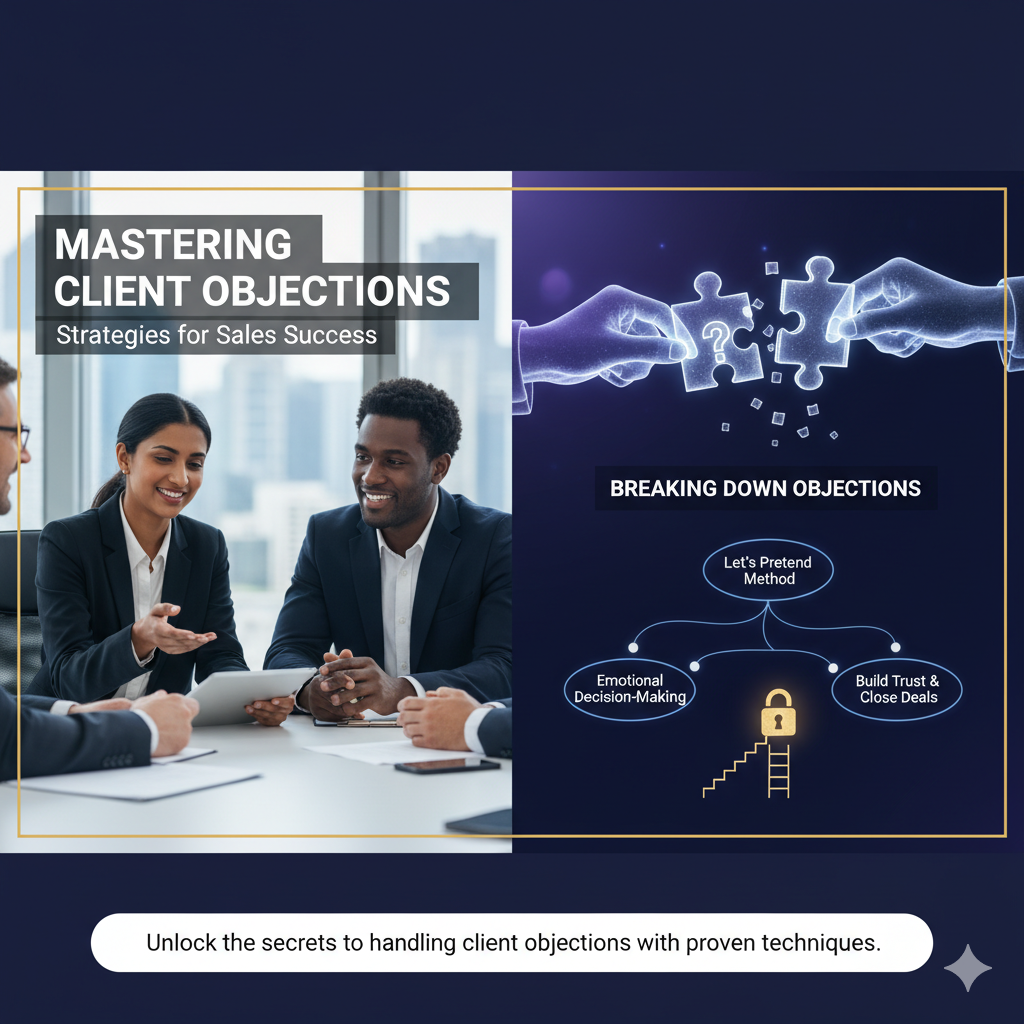Mastering Client Objections: Strategies for Sales Success

Unlock the secrets to handling client objections with proven techniques and strategies that build trust and close deals effectively.
Breaking Down Objections to Identify True Concerns
In the world of sales, objections are inevitable. However, the key to overcoming them lies in breaking them down to identify the true concerns of the client. Often, what seems like a price objection or a timing issue is masking a deeper hesitation. By dissecting the objection into manageable parts, sales professionals can address each concern individually, leading to a more comprehensive and satisfactory resolution.
For instance, when a client mentions that the timing isn't right, it's essential to delve deeper. Ask questions to understand what specific factors are influencing their decision. Is it a budget cycle, internal approvals, or perhaps a competing priority? By understanding the underlying reasons, you can tailor your approach to address these specific concerns and demonstrate how your solution can align with their needs.
The 'Let's Pretend' Method: Uncovering Budget Constraints
One effective technique to uncover the true budget constraints of a client is the "Let's Pretend" method. This approach involves framing potential budget scenarios in a hypothetical context, allowing clients to react without feeling pressured. This technique not only uncovers the real budget but also builds a sense of trust and openness between the sales professional and the client.
For example, if a client says, "Money is not an issue," respond with, "Let's pretend for a moment that the project costs $5 million. How would that fit into your budget?" This hypothetical scenario prompts the client to reveal their true budget constraints without feeling cornered. If $5 million is too high, you can gradually reduce the amount until you find a figure that the client is comfortable with. This method ensures that both parties are on the same page and prevents future surprises.
Harnessing Emotional Decision-Making in Sales
Sales are often driven by emotions and later justified with logic. Understanding and leveraging this can be a game-changer. Clients make purchasing decisions based on how a product or service makes them feel and how it aligns with their desires and goals. Therefore, it's crucial to tap into these emotions during the sales process.
When addressing objections, bring the conversation back to the emotional impacts of the decision. Remind the client of the pain points your solution addresses and how it will improve their situation. For instance, if a client is hesitant about the cost, remind them of the frustration and inefficiencies your solution will eliminate. Ask questions like, "How much longer are you willing to tolerate these challenges?" This approach reinforces the emotional benefits and underscores the value of your solution.
Building Trust and Closing Deals with Confidence
Ultimately, the goal is to build trust and close deals with confidence. Trust is the cornerstone of any successful sales relationship. It is built through transparency, understanding, and delivering on promises. When handling objections, maintain a professional yet empathetic tone. Show that you genuinely care about the client's concerns and are committed to finding a solution that works for them.
Closing deals with confidence comes from knowing that you have addressed all objections thoroughly and transparently. Ensure that there are no lingering doubts in the client's mind by summarizing the key points and confirming their agreement. Statements like, "So, if we can agree on the price, there is nothing else stopping us from moving forward, correct?" help in solidifying the client's commitment.
In conclusion, mastering client objections involves breaking down concerns, using innovative techniques like the "Let's Pretend" method, tapping into emotional decision-making, and building unwavering trust. By integrating these strategies, sales professionals can navigate objections with confidence and close deals more effectively, ensuring long-term success in today's competitive market.

